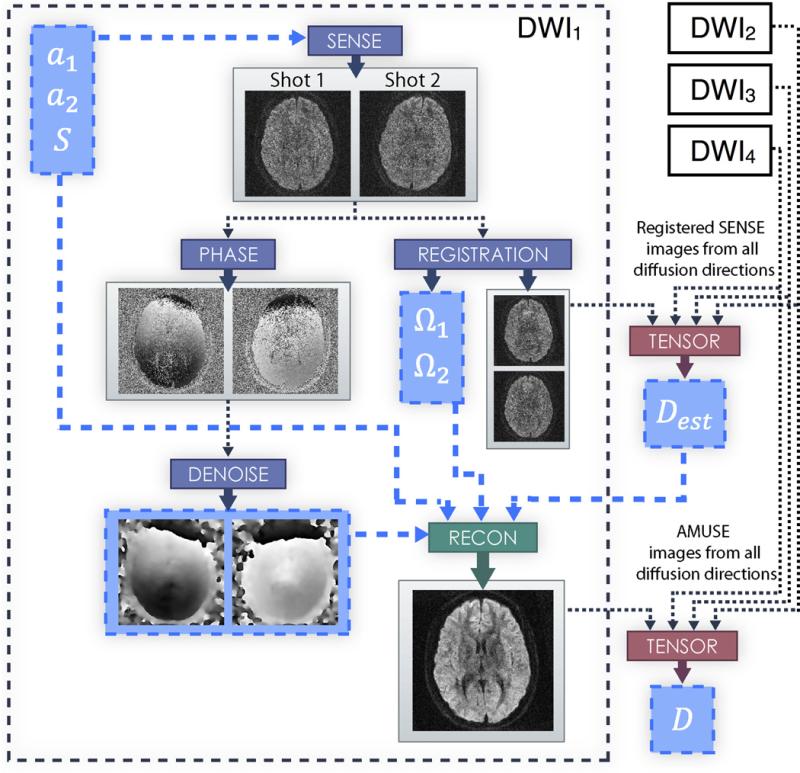
Purpose: To develop new techniques for reducing the effects of microscopic and macroscopic patient motion in diffusion imaging acquired with high-resolution multishot echo-planar imaging.
Theory: The previously reported multiplexed sensitivity encoding (MUSE) algorithm is extended to account for macroscopic pixel misregistrations, as well as motion-induced phase errors in a technique called augmented MUSE (AMUSE). Furthermore, to obtain more accurate quantitative diffusion-tensor imaging measures in the presence of subject motion, we also account for the altered diffusion encoding among shots arising from macroscopic motion.
Methods: MUSE and AMUSE were evaluated on simulated and in vivo motion-corrupted multishot diffusion data. Evaluations were made both on the resulting imaging quality and estimated diffusion tensor metrics.
Results: AMUSE was found to reduce image blurring resulting from macroscopic subject motion compared to MUSE but yielded inaccurate tensor estimations when neglecting the altered diffusion encoding. Including the altered diffusion encoding in AMUSE produced better estimations of diffusion tensors.
Conclusion: The use of AMUSE allows for improved image quality and diffusion tensor accuracy in the presence of macroscopic subject motion during multishot diffusion imaging. These techniques should facilitate future high-resolution diffusion imaging.
Citation: Guhaniyogi, S., Chu, M. L., Chang, H. C., Song, A. W., & Chen, N. K. (2016). Motion immune diffusion imaging using augmented MUSE for high-resolution multi-shot EPI. Magnetic resonance in medicine, 75(2), 639–652. https://doi.org/10.1002/mrm.25624
